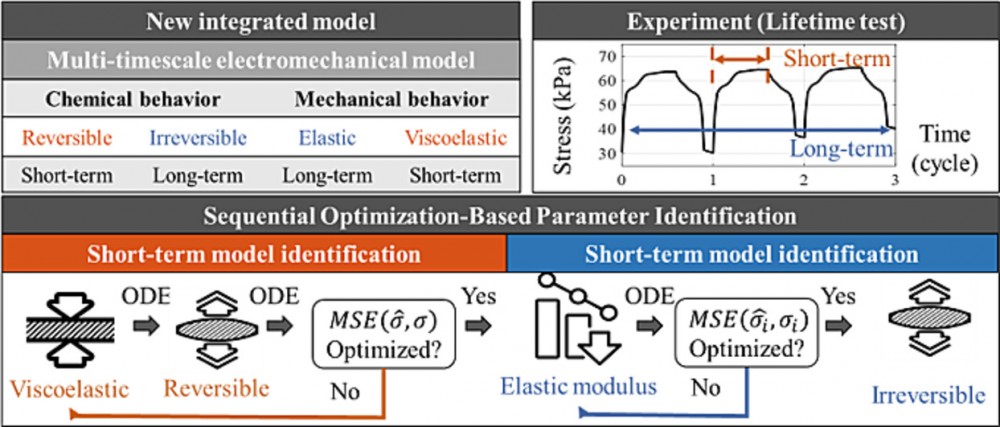2025 Sequential Optimization-Based Parameter Identification for Multi-Timescale Electromechanical Model of Battery
본문
- Journal
- Journal of Energy Storage
- Date
- 2025-03
- Citation Index
- SCIE (IF: 8.9, Rank: 16.8%)
- Vol./ Page
- Vol. 112, pp. 115481
- Year
- 2025
- Link
- https://doi.org/10.1016/j.est.2025.115481 131회 연결
In the battery systems within electric vehicles, battery modules/packs are fixed, imposing mechanical stress due to the swelling effect. This stress significantly impacts the reliability of the battery cells and the safety design of external structures. To achieve an ideal stress condition internally, it is crucial for the battery system model to accurately simulate electromechanical behaviors. However, existing research on mechanical stress of battery systems has primarily considered only the viscoelastic properties or the interaction of swelling with the state of charge. Additionally, identifying these characteristic parameters necessitates conducting specific experiments or performing optimization-based parameter identification. These identification methods require either extensive experiments or the estimation of numerous parameters, demanding time and cost. This study proposes a multi-timescale electromechanical model that includes degradation, along with an efficient sequential optimization-based method for parameter estimation. The proposed method requires only a single experiment in a pressurized setup, significantly reducing costs in the development phase. The parameter identification process is divided into two timescales: short-term and long-term. The short-term identification enhances accuracy and computation time by sequentially estimating parameters using physics from internal structure. The long-term identification reflects model degradation through cycle-based updates. The validation process confirms the efficiency of our proposed method in parameter identification compared to existing techniques and highlights the importance of update due to degradation.

